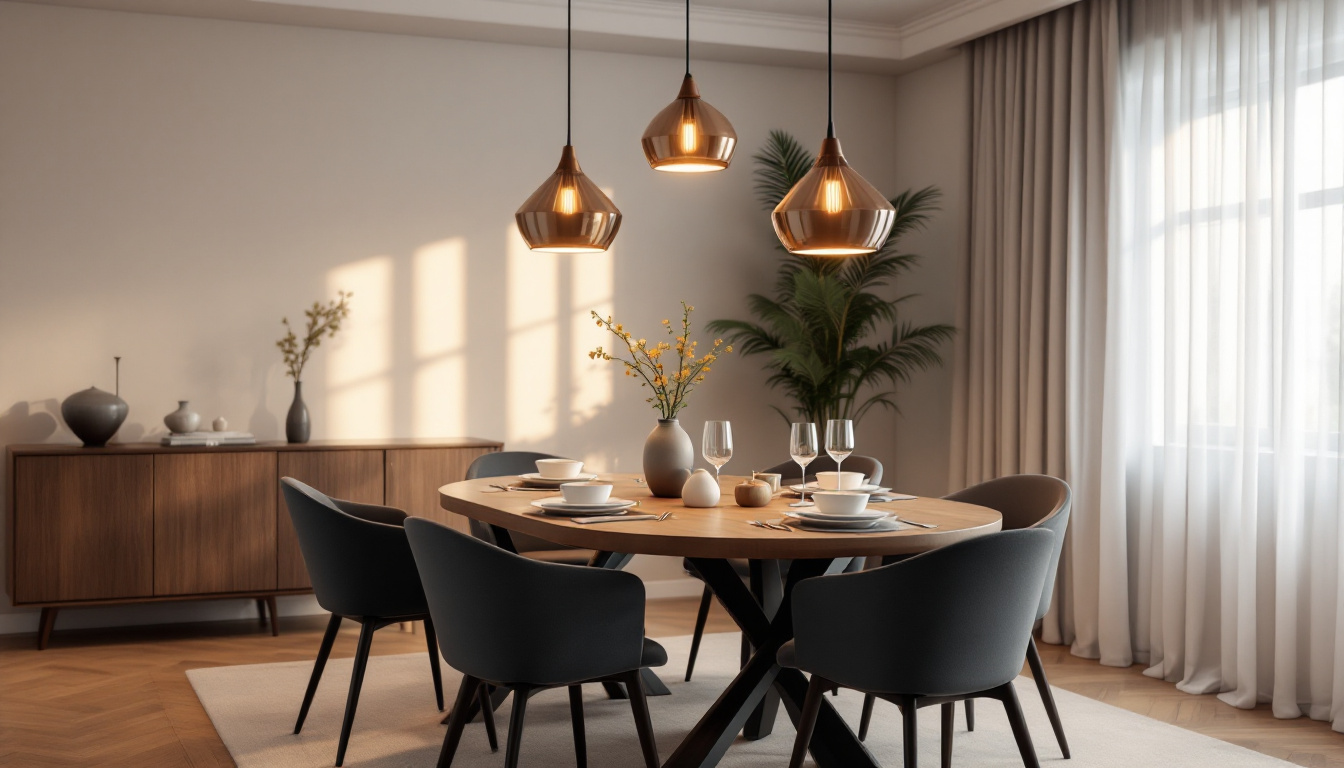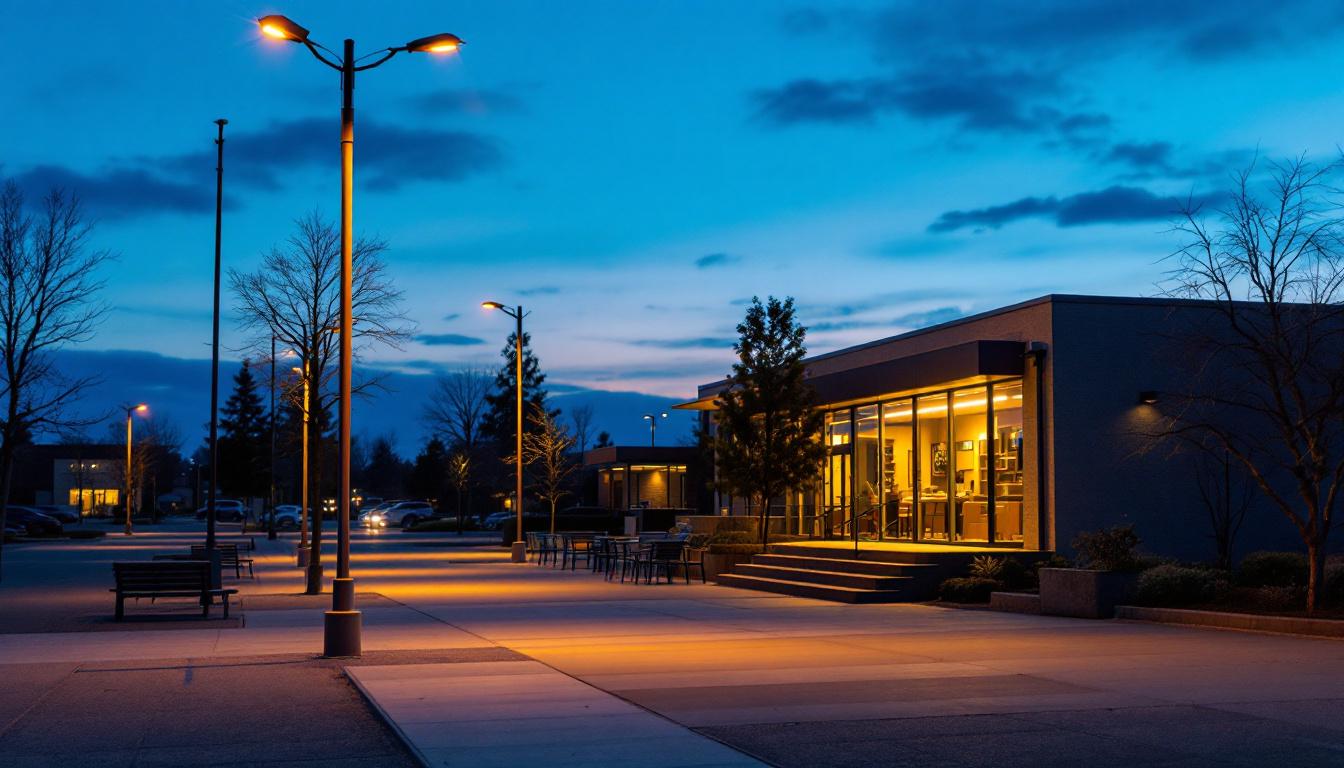
Lighting plays a pivotal role in setting the mood and functionality of any dining room. As a lighting contractor, understanding the nuances of pendant lighting can significantly enhance your projects and client satisfaction. This article delves into the various aspects of pendant lights for dining rooms, offering insights on how to avoid common issues that may arise during installation and design.
Pendant lights are versatile fixtures that hang from the ceiling, providing focused illumination while also serving as decorative elements. They come in various styles, sizes, and materials, making them suitable for a wide range of dining room aesthetics. However, selecting the right pendant lights involves more than just choosing a beautiful design; it requires a comprehensive understanding of their functionality and placement.
There are several types of pendant lights, each serving different purposes and styles. Some of the most common types include:
One of the most critical aspects of pendant lighting is selecting the appropriate size for the dining room. A fixture that is too large can overwhelm the space, while one that is too small may not provide adequate illumination.
A general guideline is to choose a pendant that is about one-third the width of the dining table. This proportion ensures a balanced look while providing sufficient light for the dining area. Additionally, the height at which the pendant is hung is crucial; a good rule of thumb is to hang the fixture 30 to 36 inches above the table surface.
Moreover, considering the scale of the room is essential when selecting pendant lighting. In a spacious dining room with high ceilings, a larger, more dramatic pendant can create a stunning visual impact, while in a cozy, intimate setting, smaller fixtures can enhance the warmth of the space. Layering different types of lighting, including wall sconces and recessed lights, can further enhance the overall ambiance, allowing the pendant lights to shine as the centerpiece of the room.
Another factor to consider is the color temperature of the bulbs used in the pendant fixtures. Warmer tones, typically around 2700K to 3000K, create a welcoming and inviting atmosphere, perfect for family dinners or entertaining guests. On the other hand, cooler tones can lend a more modern and energetic feel, which might be suitable for a contemporary dining area. By thoughtfully combining these elements, you can create a harmonious lighting scheme that elevates the dining experience.
Even with the right selection of pendant lights, several issues can arise during installation. Awareness of these potential pitfalls can help lighting contractors avoid costly mistakes and ensure a smooth installation process.
One of the most common issues encountered during the installation of pendant lights is electrical complications. Ensuring that the existing wiring can support the new fixtures is essential. Contractors should assess the electrical load and confirm that the circuit can handle the additional wattage.
Moreover, proper grounding and adherence to local electrical codes are paramount. Failing to meet these requirements can lead to safety hazards and potentially void warranties on the fixtures. It’s also advisable to check for any signs of wear or damage in the wiring before proceeding with the installation. Outdated or frayed wiring can not only compromise the performance of the pendant lights but also pose serious fire risks. A thorough inspection can prevent future issues and ensure that the installation is both safe and effective.
As mentioned earlier, the height and placement of pendant lights are crucial for both aesthetics and functionality. However, many contractors overlook this aspect during installation. It’s essential to consider the layout of the dining room, including furniture placement and ceiling height, to determine the ideal position for the pendant lights.
In open-concept spaces, the alignment of pendant lights with dining tables can create a cohesive look. Ensuring that the lights are centered over the table and appropriately spaced can enhance the overall design. Additionally, the choice of bulb type and color temperature can significantly affect the ambiance of the space. Warm white bulbs tend to create a cozy atmosphere, making them ideal for dining areas, while cooler tones can add a modern touch. By taking into account both the physical placement and the lighting characteristics, contractors can elevate the functionality and aesthetic appeal of the room, ensuring that the pendant lights serve as both a practical source of illumination and a stunning design element.
Beyond functionality, the design of pendant lights plays a significant role in the overall ambiance of the dining room. Lighting contractors must consider various design elements to ensure that the fixtures complement the room’s decor.
The style of pendant lights should align with the overall aesthetic of the dining room. Whether the space is modern, traditional, or eclectic, selecting fixtures that resonate with the existing decor can elevate the entire room. For instance, sleek, minimalist pendants may suit a contemporary space, while ornate, vintage designs may be better suited for a traditional dining area.
Additionally, mixing and matching different styles can create an interesting visual dynamic. However, it’s essential to maintain a cohesive theme to avoid a cluttered appearance.
The color and material of pendant lights can significantly impact the room’s atmosphere. Metallic finishes like brass or chrome can add a touch of elegance, while wooden or fabric shades can create a warm, inviting feel. Contractors should encourage clients to consider the color palette of the dining room when selecting pendant lights.
Moreover, the material can affect the quality of light emitted. For instance, glass shades may provide a brighter, more diffused light, while opaque materials can create a softer ambiance. Understanding these nuances can help contractors guide clients toward the best choices for their dining spaces.
Incorporating flexibility into the lighting design can enhance the functionality of pendant lights in dining rooms. Lighting contractors should explore various control options to allow clients to adjust the ambiance according to their needs.
Installing dimmer switches is one of the simplest ways to provide flexibility in lighting. Dimmers allow users to adjust the brightness of pendant lights, creating different moods for various occasions, from intimate dinners to lively gatherings.
Moreover, integrating smart lighting controls can elevate the dining experience. Smart systems enable users to control the lighting remotely, set schedules, and even change colors to match the occasion. This level of control can significantly enhance the functionality of pendant lights in a dining room.
Layered lighting involves combining different types of lighting to create a well-balanced and functional space. In addition to pendant lights, incorporating ambient, task, and accent lighting can enhance the dining experience.
For example, wall sconces or recessed lighting can provide ambient light, while table lamps or candles can add warmth and intimacy. By layering different light sources, contractors can create a dynamic and inviting atmosphere in dining rooms.
Ensuring the longevity of pendant lights is crucial for maintaining their appearance and functionality. Lighting contractors should educate clients on proper maintenance practices to keep their fixtures in optimal condition.
Regular cleaning is essential to prevent dust and grime buildup, which can dull the appearance of pendant lights and affect their performance. Depending on the material, different cleaning methods may be required. For instance, glass shades may need gentle cleaning solutions, while metal fixtures may require polishing to maintain their shine.
Contractors should provide clients with clear instructions on how to care for their pendant lights, including recommended cleaning products and techniques. This guidance can help clients preserve the beauty and functionality of their fixtures for years to come.
Another aspect of maintenance involves bulb replacement. Contractors should inform clients about the types of bulbs compatible with their pendant lights and the importance of using the correct wattage. This knowledge can prevent potential issues, such as overheating or flickering lights.
Moreover, as technology advances, clients may benefit from upgrading to energy-efficient LED bulbs. These bulbs not only consume less energy but also have a longer lifespan, reducing the frequency of replacements. Educating clients about these options can enhance their overall satisfaction with their lighting choices.
Pendant lights can transform a dining room into a stylish and functional space, but careful consideration is essential during the selection and installation process. By understanding the various types of pendant lights, addressing common installation issues, and focusing on design and maintenance, lighting contractors can ensure a successful outcome for their clients.
Ultimately, the goal is to create a dining environment that is not only visually appealing but also enhances the overall dining experience. By prioritizing these factors, contractors can build a reputation for excellence in their work, leading to satisfied clients and repeat business.
Ready to elevate your dining room designs with the finest pendant lights? Look no further than LumenWholesale, where we provide contractors with exceptional, spec-grade lighting solutions at wholesale prices that simply can’t be beaten. Our commitment to quality and affordability means you can access a vast array of lighting products that meet rigorous industry standards, ensuring every installation shines with reliability and performance. Plus, with the convenience of free shipping on bulk orders, you can enjoy premium lighting without the premium price tag. Don’t compromise on quality or cost—discover the best value in wholesale lighting today and make your next project a glowing success.

Discover essential tips and expert insights for lighting contractors on optimizing switch and outlet installations.

Discover the essential role of pole lights in outdoor commercial spaces, exploring their impact on safety, aesthetics, and energy efficiency.

Explore the crucial role of theater lighting in enhancing safety during installations.

Discover the frequent pitfalls lighting contractors encounter with G light bulbs.